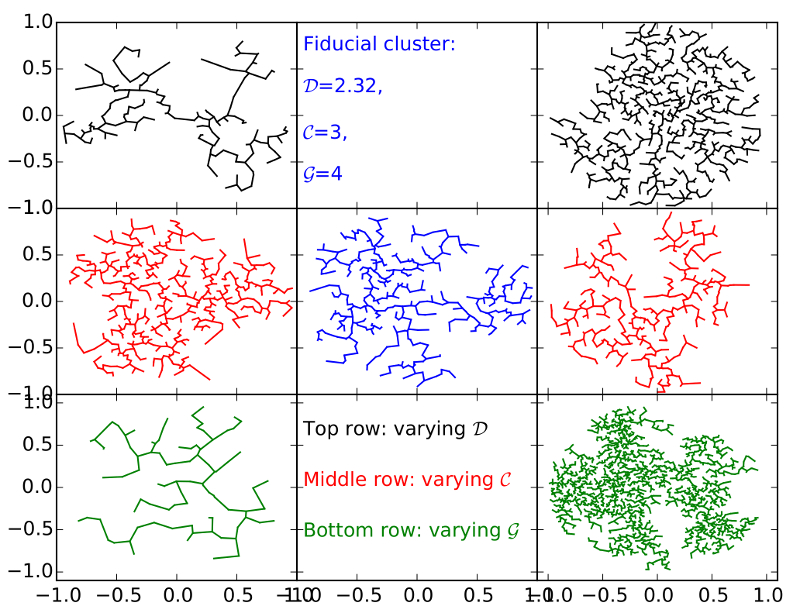| EPoS Contribution |
|
Q+: a new method for quantifying structure in young clusters
Sarah Jaffa Cardiff U, Cardiff, GB | |
|
Simulations of star formation must be informed and validated by
comparison with observation. However, since star-forming clouds and the
star clusters they spawn are chaotic systems, this comparison can only
be made using statistical measures.
Young star clusters often exhibit sub-structured distributions, which give them a fractal appearance, and this has been exploited with the Q parameter. However, computed values of Q do not always return the correct fractal dimension for synthetic star clusters, as other parameters used to generate the fractal structure are ignored. In the box-fractal method of generating artificial star clusters, the structure is specified by: D - the fractal dimension, C - the density scaling exponent, and G - the number of generations. We present a new algorithm that is able to robustly estimate these parameters from a two-dimensional image of a cluster. We anticipate that this algorithm will be useful, not only for characterising observed star clusters and quantifying their evolution, but also for comparing different observed star clusters with each other and with the results of simulations. | |
 | |
| Caption: The Minumum Spanning Tree of artificial star clusters showing the difference in structure produced by varying the 3 parameters (D,C,G) from their fiducial values (shown in central panel). The top row shows the variation with fractal dimension, D, the middle shows the variation with density scaling exponent, C, and the bottom row shows the variation with number of generations, G. | |
| Collaborators: A. Whitworth, Cardiff U, GB |
Suggested Session:
Cluster Formation |

